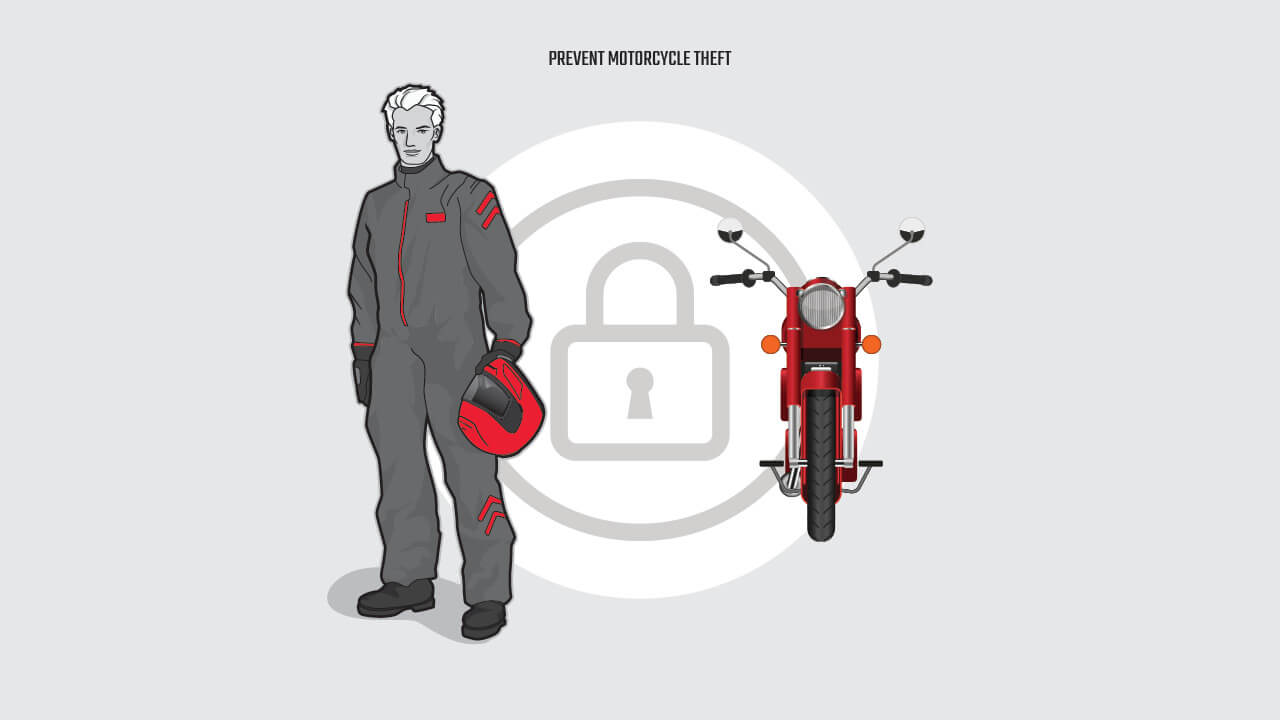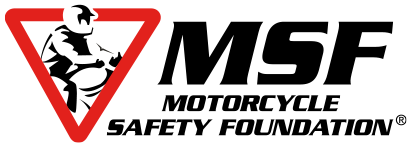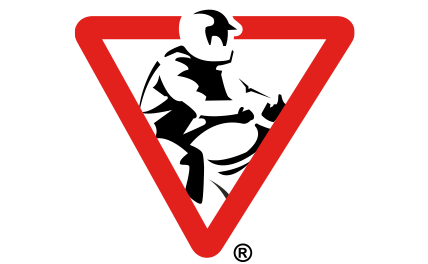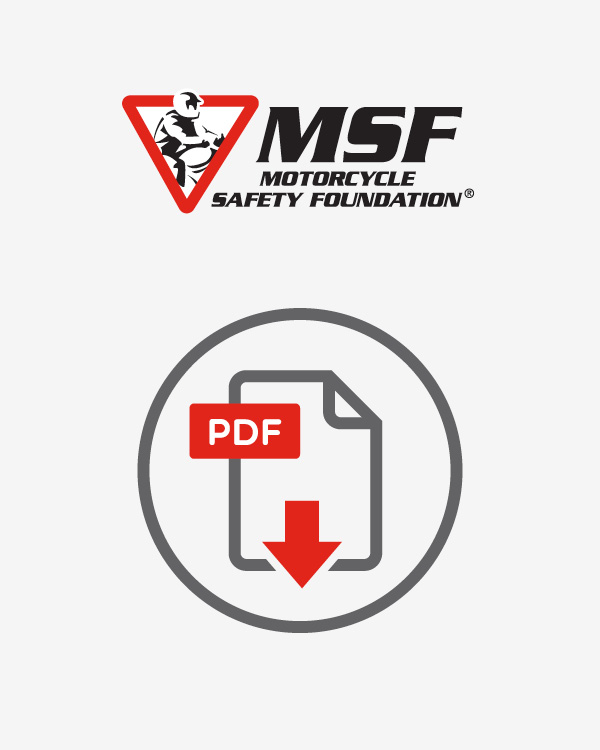Follow these Basic Tips to Help Avoid Becoming a Victim of Motorcycle Theft

- Lock your ignition and remove the key. Most bike thefts occur when the ignition is shut off, but not locked.
- Lock the forks or disk brakes with locks that have large, brightly colored tags.
- If traveling with other riders, lock motorcycles together when not in use.
- If riding alone, lock your bike to a secure, stationary object that can’t be easily dismantled, such as a light pole.
- Add an audible alarm to your motorcycle.
- When traveling and spending the night at a hotel, locate an outdoor security camera and park your bike in the camera’s view. If this is not possible, park your bike close to your room.
- Keep an eye on your bike. When parking at a public event, check your motorcycle periodically, especially immediately after leaving your bike, to make sure there are no suspicious individuals lurking about.
- If parking in a garage, block your bike with automobiles, close the garage door and make sure it is locked.
- Don’t store your title in your bike’s storage compartment, tank bag or saddlebag. The safest place for your title is at home.
- Uniquely mark and then photograph your bike. If thieves take your bike, note its unique markings to law enforcement using the photos you have taken.
- Keep your bike registration and insurance identification card on you when you ride.
- Be careful about giving out private information on where you live, work or play.
If you use a trailer to transport your motorcycle, follow these safety tips:
- Park the trailer in a well-lit location near security cameras or in an area easily seen by restaurant, hotel or event staff.
- Lock the trailer doors and hitch.
- Secure doors by backing up to a wall, so there is not enough room for doors to be opened.
- Know your trailer identification and license plate registration numbers.
Guard against theft when selling your bike:
Using fake identities has become common in bike thefts. Don’t turn over the title until you can verify the check or money order is valid and has cleared the bank. Mail the title to the new owner.
- Ask the buyer for his or her name, address, date of birth and driver’s license number. Then ask to see the driver’s license and check that the information given matches the license.
- Be especially cautious of anyone who presents out-of-state identification.
- Make sure the potential buyer wasn’t dropped off by another party and is planning to take a one-way test ride with your bike. Verify that the buyer owns the vehicle he or she arrived with, and that the vehicle is of equal or greater value than your bike.
- Check that the buyer’s driver’s license carries a valid motorcycle endorsement.
- It isn’t necessary that you provide a buyer with the title right away. A written document signed by the seller and buyer indicating price and method of payment can serve as proof of purchase. You can forward the title to the buyer once the check has cleared the bank.
- If you decide to sell your motorcycle on consignment, do not provide the signed title to the dealership until you have received your money in full. Make sure the dealership is a reputable business before you trust them as an agent.
Theft Prevention Tips courtesy of Sentry Insurance


